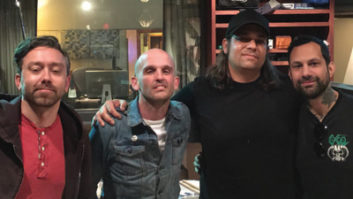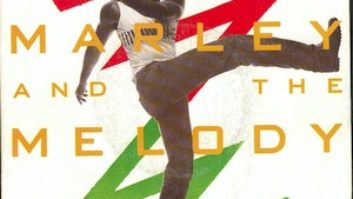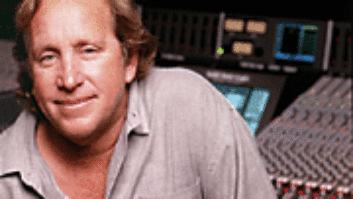By Janice Brown
From the Pro Sound News June ’07 issue: While microphones and mic pres may be the most influential tools on a lead vocal sound, today’s engineers also rely on processing plug-ins to help in the basic editing, tuning and shaping of the recorded vocal. Pro Sound News recently spoke with some producer/engineers about the software tools they employ in vocal processing.
Mark Kondracki of New York City’s Outloud Audio (Jenny Bruce, Stretcher) has a recent project that illustrates his vocal treatment: “I recently completed a short EP of standards featuring the incomparable Lucy Woodward on vocals. First, I comp’d the best parts of the vocal performance to create the final main vocal I wanted to work with. Lucy has an amazing voice, and her pitch is almost perfect. I needed only a few cents of adjustment here and there. Since these were standards with a small backing group, the focus was on the vocal, so I wanted it perfect. I found that Waves Tune, when used for subtle adjustment, is nearly transparent, and I love the interface and the ease of use. For more extreme processing, I use Melodyne–as it imparts fewer artifacts–but Waves Tune really got it right with the interface and real-time correction and is perfect for minor tune-ups.
“I prefer to compress first then EQ–especially with the vocal sound I was going for with Lucy. For compression on this particular track, I used the Waves Renaissance compressor for a touch of compression with a moderate attack at 2:1 compression (maybe touching 1-2 dB of compression) making her voice come forward ever so slightly and enhancing her breath and mouth noises to give it a more intimate experience. Typically, I use either Sony Oxford or Waves Renaissance EQs. For this vocal track (cut with a Neumann U67 into an API 312), I used the Renaissance EQ to provide a high-pass filter at 80 Hz to get rid of any low end that I didn’t want in the vocal track, then I cut maybe 1-2 dB in a wide Q at 250 Hz where there was a touch too much of thickness in the voice (augmented by the API). I boosted a touch in the 2-3k range and then gave it some air with a shelf at 16k. Every voice is different, but these settings are good starting points for me. The final and most important step is the vocal fader rides–even 1 or .5 dB here and there can really add to an already compelling performance.”
Otto D’Angelo (Soulfly, DMX, Waylon Jennings) recently finished two projects requiring drastically different levels of vocal processing. On the one hand, he recorded and mixed the band, Vanity Tweak, featuring a 17-year-old female singing heavy pop metal, and on the other, an “ego project” for a self-made millionaire who has never sung, performed or played an instrument. To the latter, D’Angelo offers, “As a facility owner and producer/engineer, you get all kinds of invitations to work on all kinds of strange projects. This one is no exception–I had to use every tool in the box!”
Producer/engineer Otto D’Angelo (left) with Vanity, lead singer of Vanity Tweak, at his Chaton Studios in Phoenix, AZ.Here’s how he recorded and processed the totally inexperienced vocalist: “First, I recorded him with an analog 1176 at 8:1 into my Pro Tools HD system. Then, I had to time-stretch each word to fit using plug-ins in Pro Tools. In the cases where Antares Auto-Tune was needed beyond its capacity, I found that Speed by Wave Mechanics could execute the necessary course adjustments with less degradation of the audio file, leaving me with a close approximation that I could then fine-tune with Auto-Tune.”
By contrast, D’Angelo only used slight compression on Vanity Tweak. “With a great singer like Vanity singing over a very dense bed of metal guitars and psychotic drums, I used an LA2A on the way in and then used an interesting combination of three compressors on the way out. First, I used a Focusrite peak limiter followed by Bomb Factory’s BF76 plug-in to moderately level the dynamics. Finally, I used the [Digidesign] Maxim compressor to squeeze her into the picture without ever losing any breath or nuance.”
Mike Major (Sparta, At the Drive-In, Leaf; www.mikemajorproductions.com) shares a general recipe: “When I mix, I set up a group for my vocals to apply a general treatment to the whole vocal package. I use a Digital Fish Phones Blockfish as the first fast comp usually in VCA mode, a UAD LA-2A after that to provide general gain reduction. I then use a UAD Cambridge EQ or a UAD Pultec Pro for general tone shaping, the Pultec if I need more thickness, and then the Digital Fish Phones Spitfish as my de-esser. Once that is set then I only apply channel processing to the stuff that needs help. I like the Nuendo Magneto plug-in to warm up a vocal. Otherwise, I use UAD 1176s, LA-2As or the EX-1 plug-ins to fix the troublesome inputs. I also like the Nuendo dynamics plug-in for a pretty transparent compressor. The Nuendo EQ works well also.”
Blumpy (Filter, Fuel, Vertical Horizon) uses a blend of analog and digital tools: “I track with very soft compression to keep the level uniform. I love my Crane Song Trakkers–I can get just about anything I want out of them. They are the most universal compressor/limiter I’ve ever used. I also like the FMR RNCs (Really Nice Compressor). After it’s recorded, I’ll turn to the Waves Vocal Bundle for processing. The Waves Doubler plug-in works in a pinch. I love using the Doubler on a recorded double.
“Waves RVox is a godsend; it gets the sound to that 90 percent mark. I’d have to chain several compressors together with a de-esser otherwise. That said, I still use additional de-essers and minimal EQ’ing when necessary. Also, Waves Doubler can help make a wider vocal without sounding too ‘effected’ in a dense mix. I also try not to tune vocals. If there is a word here or there, I don’t tweak it beyond the 15 percent mark (using the Waves bundle). Over-tuning blends the vocal too much into the track. It can turn the vocal into a tone instead of a performance. Backgrounds and doubles can be a different story. When adding another’s voice, it’s for the timbre making sure the phrasing and tonality match the lead vocal’s performance is essential. Syncrho Arts VocAlign is also a great tool for doubles and harmonies that need their phrasing to match another track.
Doug McBride (Rachael Yamagata, Augustana, The Walkmen; www.gravitystudios.com) shares: “Once I’ve captured a good number of good performances I’ll make a composite track of the best lines as well as a ‘Mult Comp’ of the second best lines. These I use to fill out the sound on choruses or lines that need to be fuller-sounding. Once the Comp tracks are done, if necessary I’ll use Auto-Tune in the Graphical mode to tune a few words or lines that may sound awkward. I never use ‘Auto’ mode, and never keep an Auto-Tuned word or line where the Auto-Tuning process is audible.
I’ll listen to the comp tracks and find any breaths that lead up to lines that I might want to keep–you have to be careful to make sure they’re musical. I usually pull the bass and drum tracks together before seating the vocal. At that point, I’ll see if any corrective EQ, de-essing or multi-band compression is needed. Often I’ll use the McDSP M3000 multi-band comp to tame the 2-6k region, and if the proximity effect is too strong, I may use this plug to pull down some lows as well.”
Tune in next month–in both the PSN July ’07 issue and online–as we’ll speak with these and more producer/engineers about effects plug-ins and techniques that help “fatten up” vocals, and make them pop in a mix.




